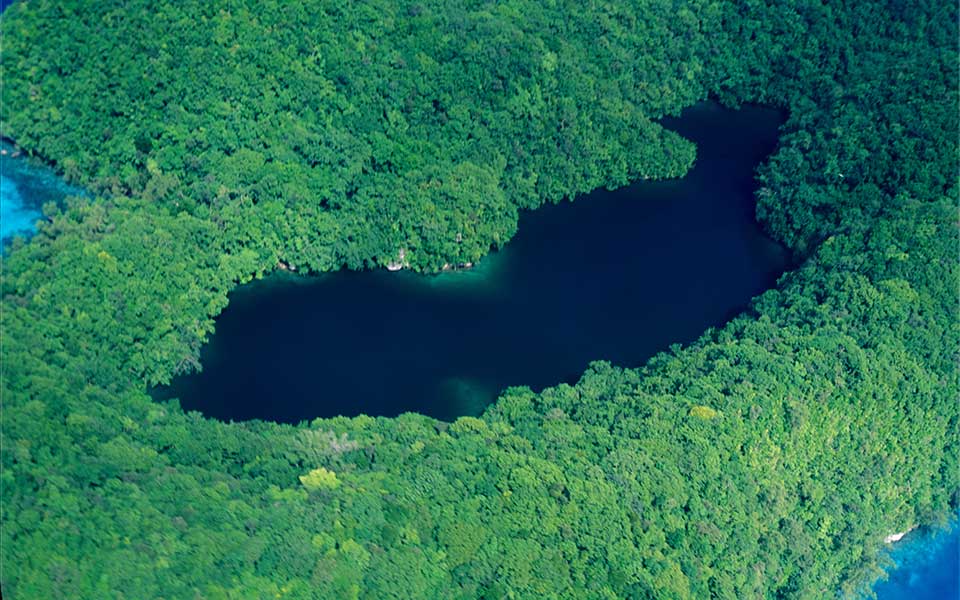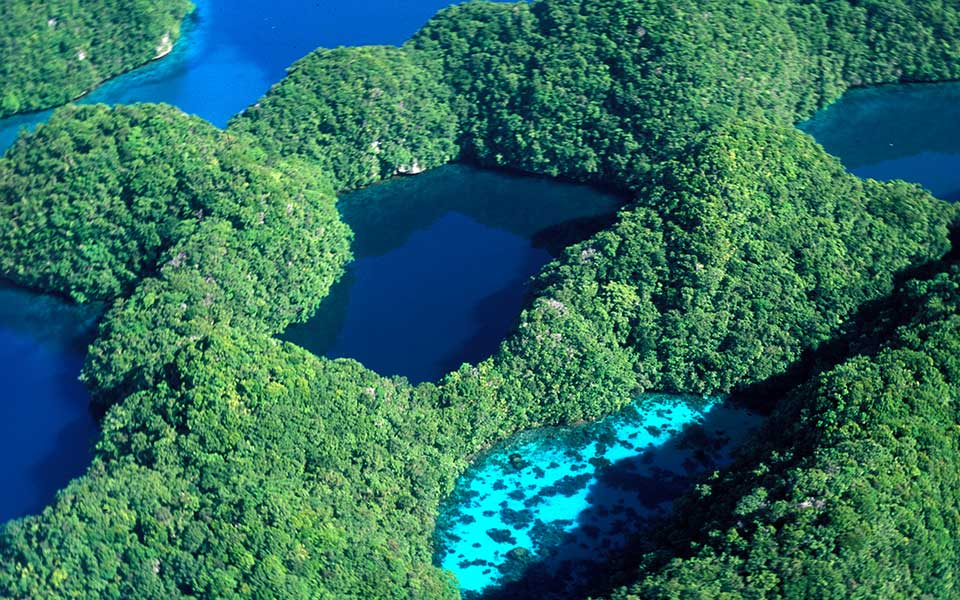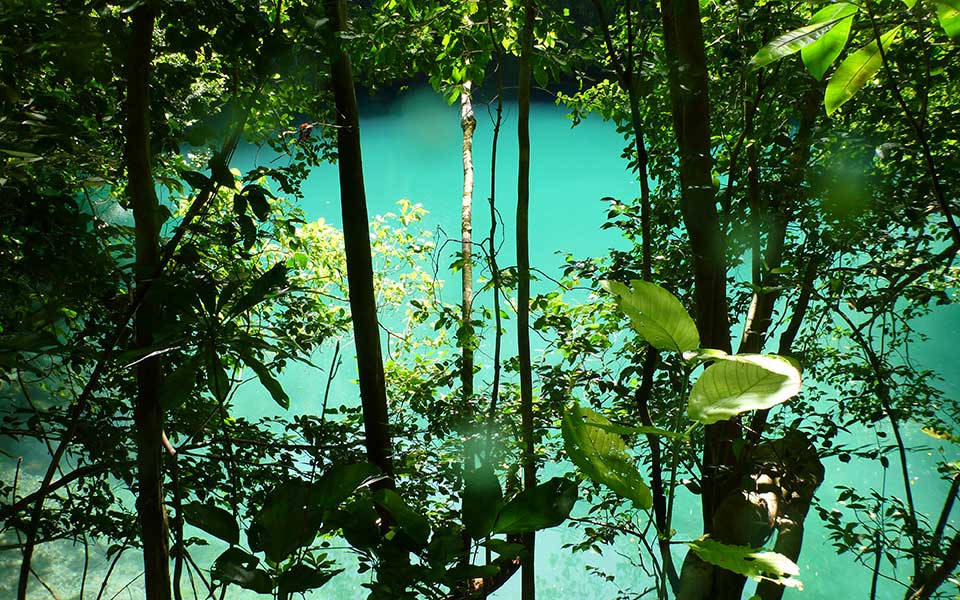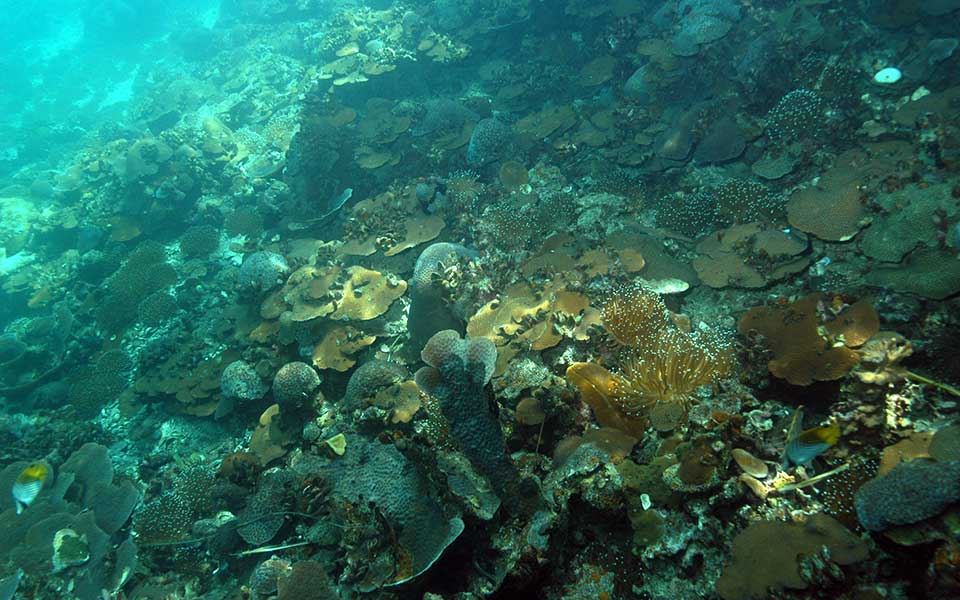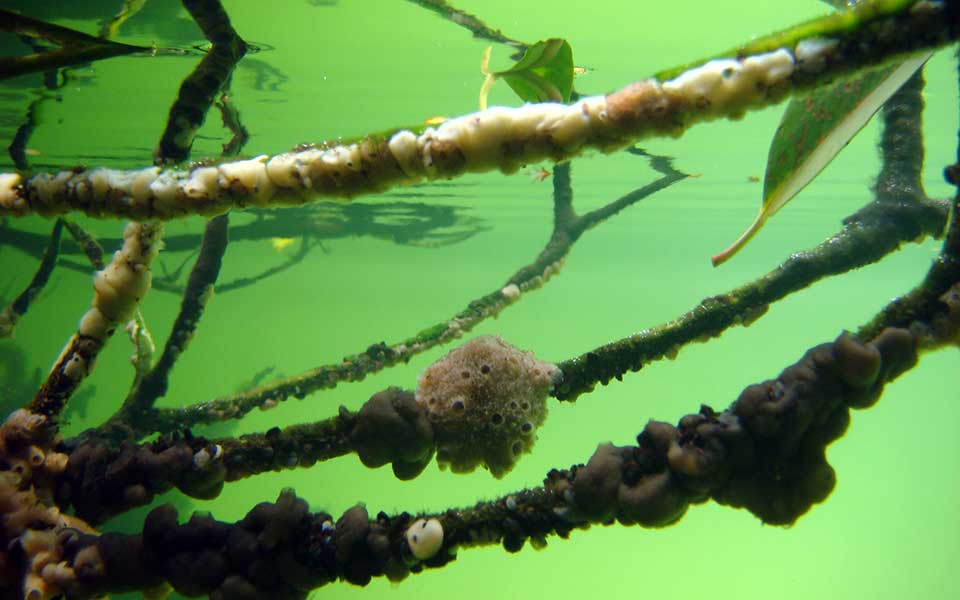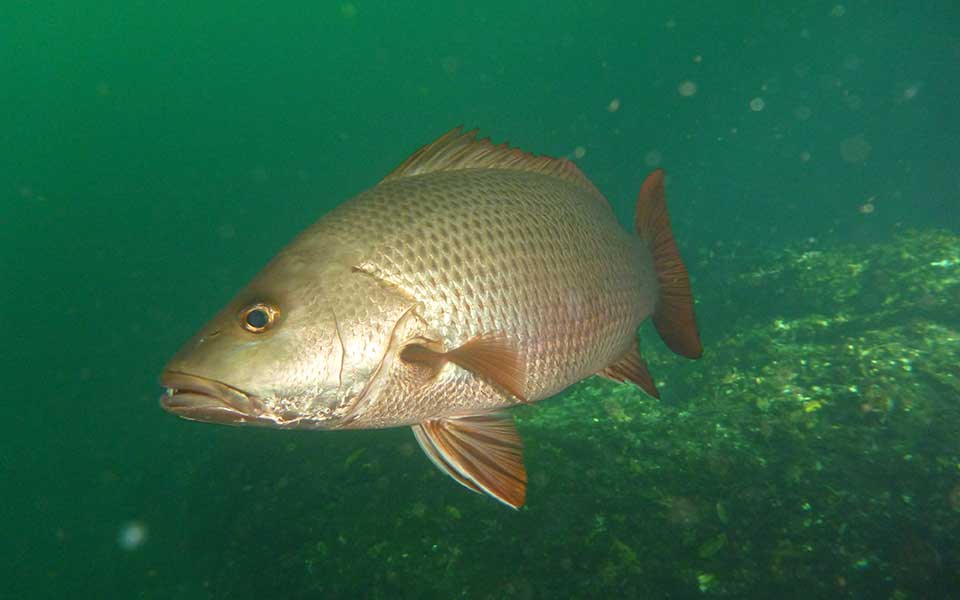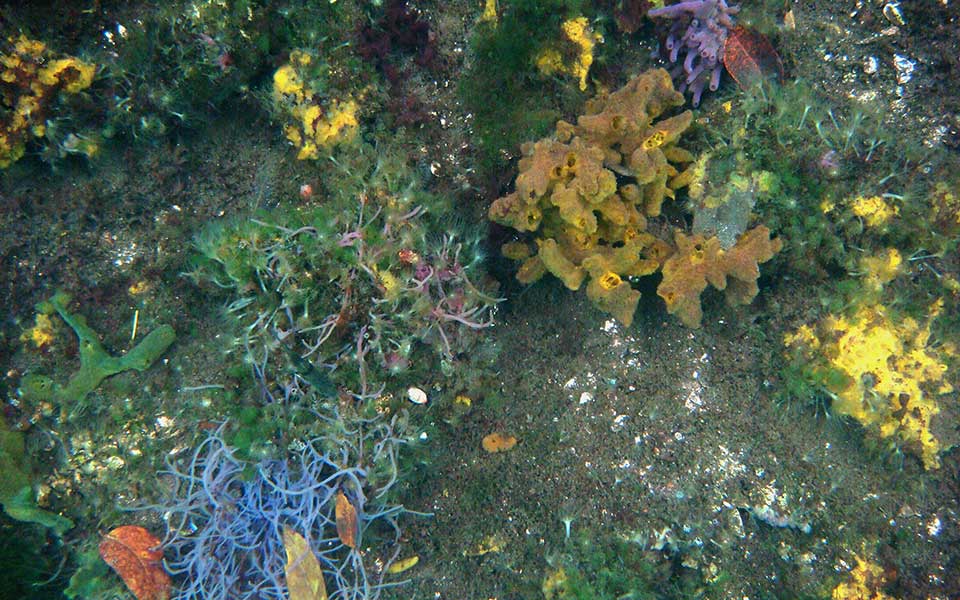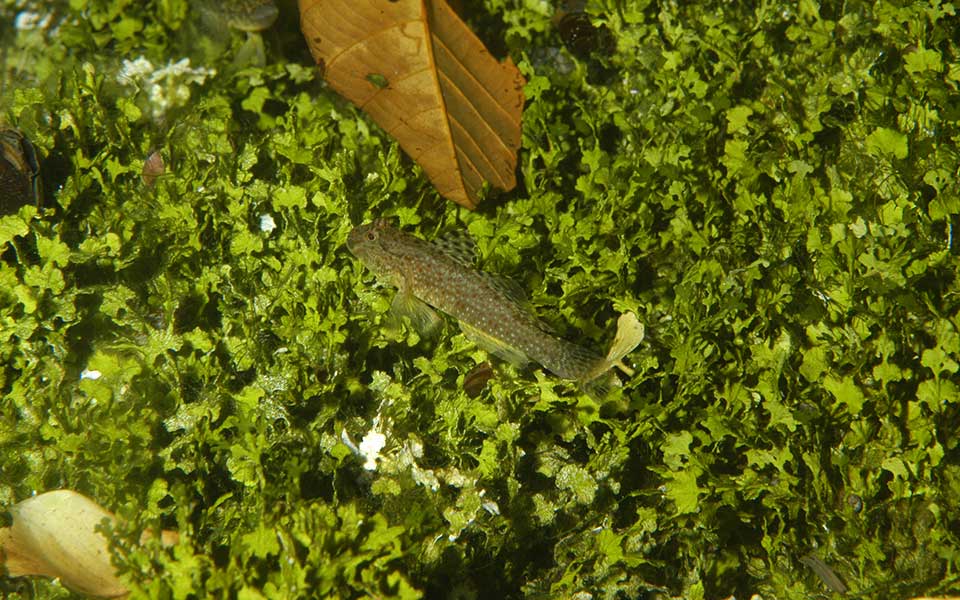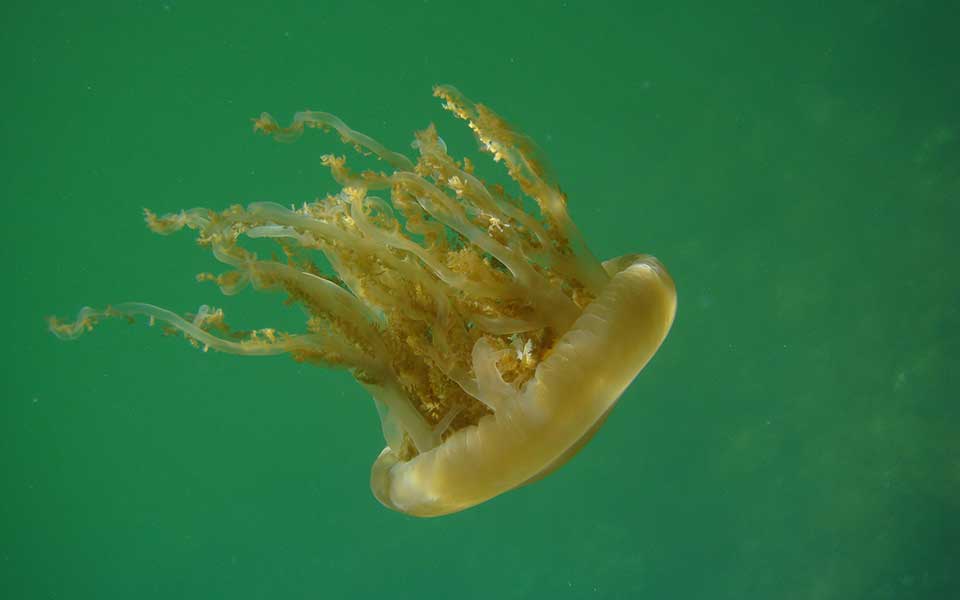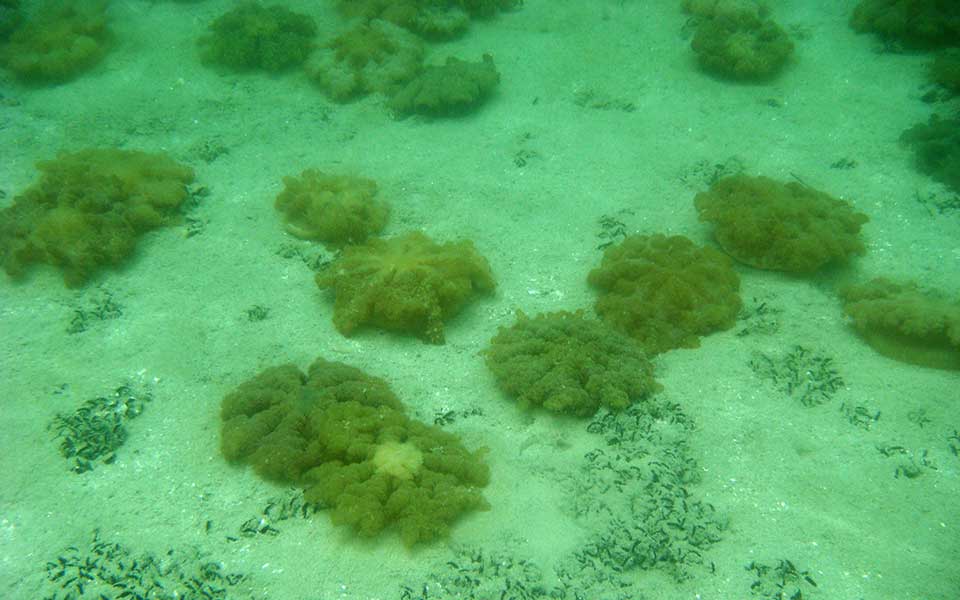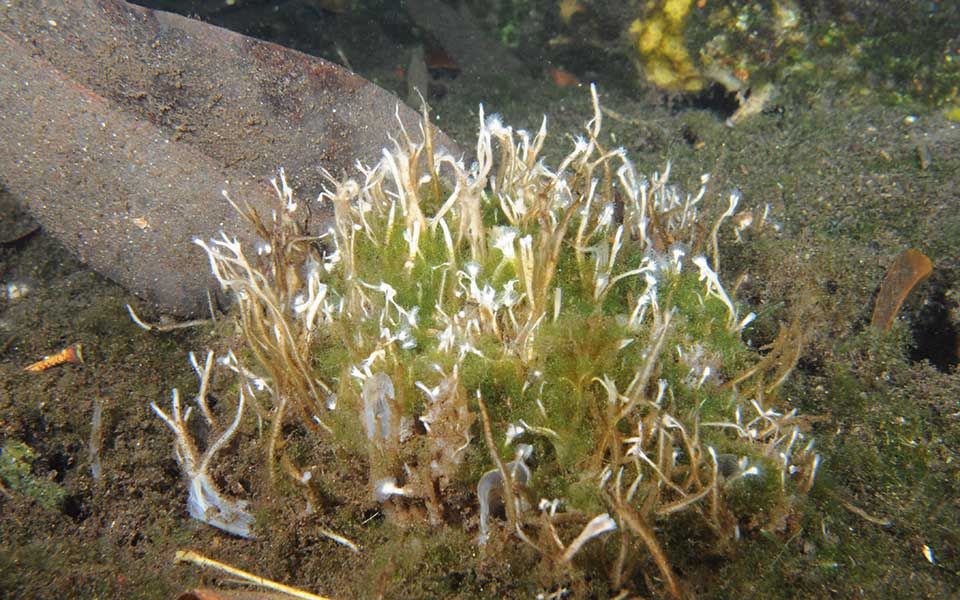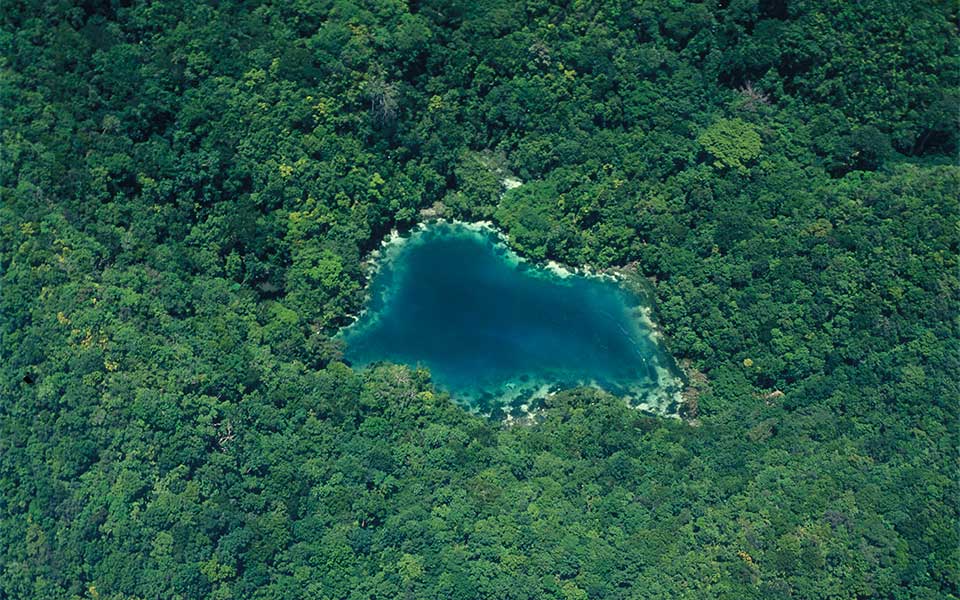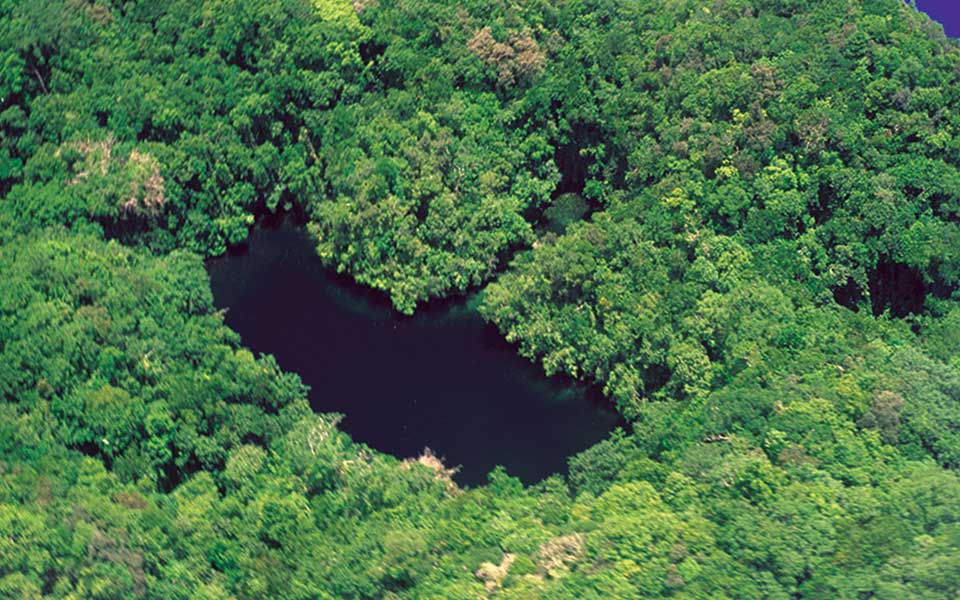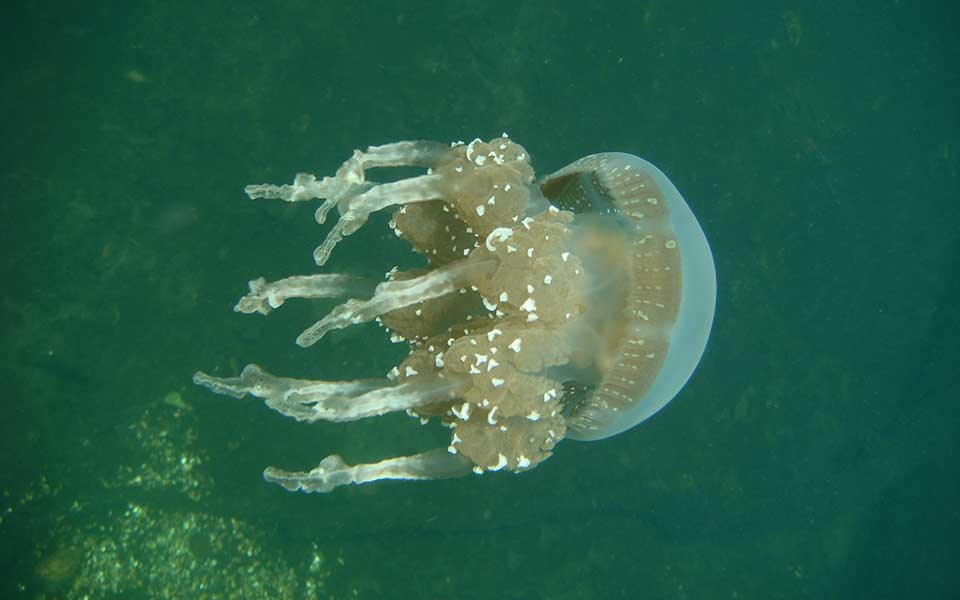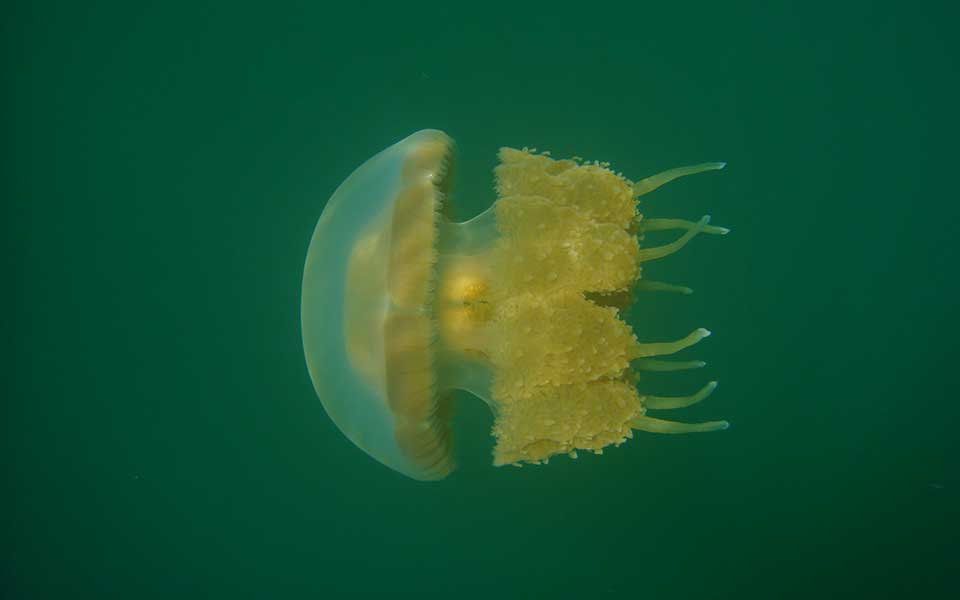There are ~57 marine lakes in Palau and each is unique, with the majority concentrated in the Rock Islands Southern Lagoon of Koror State, a UNESCO World Heritage Site. Jellyfish Lake is the only lake open to visitors. Marine lakes can be grouped into three broad categories – mixed ”holomictic,” transitional, and stratified “meromictic.” Holomictic lakes, directly connected to the ocean, have a uniform and well-oxygenated water column, and share similarities to that of the reefs found in the surrounding lagoon, often harboring corals and colorful fishes. Meromictic lakes, often found further inland with indirect connections to the ocean have damped and delayed tides, are stratified from top to bottom, and anoxic at the bottom with poisonous hydrogen sulfide. The stratification is maintained by the reduced salinity on the surface due to high annual rainfall (~4 m per year), coupled with relatively low water exchange with the lagoon. Transitional lakes can change between being mixed or stratified, depending on weather conditions. A detailed map of Palau’s marine lakes can be found in Chapt. 10, Marine Environments of Palau.

Types Of Marine Lakes
Holomictic (mixed) Lakes
Holomictic, or mixed marine lakes, have a uniform water column from top to bottom that is mixed by wind and tides. These lakes are generally located close to the ocean, with a short hike over the rock island. They retain direct connections to the lagoon with similar tides, and have lagoon-salinity water with coral reef animals that live at all depths. Some holomictic lakes have large surface tunnels through which fish can swim. The temperature, salinity, oxygen and density in holomictic lakes is homogeneous from top to bottom. These lakes look very similar to, but not exactly the same as, the surrounding lagoon and each other.
Meromictic (stratified) Lakes
Meromictic, or stratified, lakes have little mixing between layers in the water column. While many of the lakes are located farther inland in the rock islands, with steep and long hiking trails, a few are found close to the ocean, such as Jellyfish Lake. However, all of these lakes retain indirect connections to the ocean, with damped and delayed tides, through small tunnels, cracks and fissures. Stratified lakes are typically characterized by fine muddy slopes and bottoms, do not have corals and usually have mangroves along their perimeter. Instead they have colorful sponges and sometimes jellyfish that look very different from those found in the ocean. Stratification of the water column means that temperature, salinity, oxygen and density are different between surface and deeper waters, and the stagnant bottom layer is usually anoxic with poisonous hydrogen sulfide. A 1 m thick pink bacterial layer can be found at the transition zone between anoxic and oxygenated waters.
Transitional Lakes
Transitional Lakes are interesting because they can be meromictic or holomictic, depending on wind mixing and other weather patterns. These lakes are shallow and have small tunnels with delayed and damped tides, but enough exchange with the lagoon that they can sometimes be holomictic under the right conditions. They are characterized with sandy to muddy slopes, with flocculent muddy bottoms. Two examples in Palau are Ongael and T Lake. The perimeter of Ongael Lake, a transitional lake, is covered with white, dead Halimeda sand. The biodiversity in transitional lakes falls in between that of holomictic and meromictic lakes, sharing some species of both lake types. When these lakes are holomictic, they can have very clear water with uniform density, salinity and temperature from surface to bottom. When these lakes are meromictic, visibility becomes poor, with density differences in the water column
Lakes With Jellyfish
Many marine lakes in Palau have jellyfish of various species, but only a few have persistent populations of them. Five of Palau’s marine lakes have distinct subspecies of the golden jelly, Mastigias papua, the ancestral population found in Palau’s lagoon. These five endemic subspecies were named after the first five elected Palauan presidents, in succession with the age of the lake where they occur (determined by maximum depth of the lake). Ngermeuangel Lake is the oldest (and deepest) with Mastigias papua remeliiki, followed by M. papua saliii in Clear Lake, M. papua etpisoni in Jellyfish Lake, M. papua nakamurai in Goby Lake, and M. papua remengesaui in Ongael Lake.
This function has been disabled for Coral Reef Research Foundation.



